DEA Efficiency of Energy Consumption in China’s Manufacturing Sectors with Environmental Regulation Policy Constraints
Abstract
:1. Introduction
- Environmental regulations and government actions can improve energy efficiency in industry. Impacts on economic growth of environmental regulations and energy restriction mechanisms in the energy economy are both explored. Research shows that environmental regulations are beneficial to improving energy efficiency, so the energy development path has been put forward [10,11].
- Environmental regulations and government actions show various impacts on energy efficiency due to different industries. Empirical research on the implementation of energy-saving and emission reduction shows that the complementary and synergy of different policies should be made full use of between various industries [12,13].
- Environmental regulations and government actions can reduce energy efficiency of industries. According to requirements of China’s fiscal decentralization and performance evaluation, studies have shown that government intervention substantially weakens the promotion of environmental regulations, which is a concern [14,15].
2. Methods
2.1. Original CCR Model
- (1)
- Within the interval [0, 1], values for behavioral variables of DMUs denote some preference characteristic (represented by a certain utility function);
- (2)
- DMUs expect greater preference utility, characterizing stronger impact of behavior results.
- Decision variables in constraints, including qualitative variables.
- Utility function in constraints represents DMU preferences within a certain interval and the objective function represents the DMU utility. The larger the utility value, the greater the willingness of behavior-driven DMU.
2.2. Data Sources
2.3. Description of Indicator Variables
2.4. China’s Policies on Energy Conservation and Emission Reduction
3. Results
3.1. Utility Functions with Qualitative Indicators
3.1.1. Utility Function Based on Piecewise Linear Left-Leaning—High Energy-Consumption Enterprises
3.1.2. Utility Function Based on Piecewise Linear Right-Deviation—Low Energy-Consumption Enterprises
3.1.3. Utility Function Based on Piecewise Linear Intermediate—Moderate Energy-Consumption Enterprises
3.2. Energy Efficiency Assessment of China’s Manufacturing Sectors
- ■
- The DEA evaluation model of energy efficiency in manufacturing sectors with only quantitative indicators is constructed as:
- ■
- The DEA energy efficiency assessment model of manufacturing sectors with energy-efficiency policy intensity (qualitative variables) is constructed as:
3.2.1. DEA Energy Efficiency Evaluation Comparisons of Different Industries in the Same Year
3.2.2. Comparisons of DEA Energy Efficiency Evaluation for the Same Industry and Different Years
4. Discussion and Conclusions
Acknowledgments
Author Contributions
Conflicts of Interest
Appendix A
| Industry Name | Total Energy Consumption (Million Tons of Standard Coal) | Contribution to Total Energy Consumption in Manufacturing (%) |
|---|---|---|
| Smelting and pressing of ferrous metals | 69,342 | 30.580 |
| Chemical raw materials and chemical products processing | 47,528 | 20.911 |
| Non-metallic mineral products | 36,592 | 16.099 |
| Petroleum, coking and nuclear fuel processing | 20,217 | 8.895 |
| Smelting and pressing of nonferrous metals | 17,510 | 7.704 |
| Textile industries | 6960 | 3.062 |
| Metal products industries | 4811 | 2.117 |
| Rubber and plastic products | 4459 | 1.962 |
| Agricultural and sideline products processing | 4119 | 1.812 |
| Transportation manufacturing | 4086 | 1.798 |
| Paper and paper products | 4041 | 1.778 |
| General equipment manufacturing | 3634 | 1.599 |
| Computer, communications, and other electronic equipment manufacturing | 2871 | 1.307 |
| Electrical machinery and equipment | 2589 | 1.139 |
| Pharmaceutical manufacturing | 2185 | 0.961 |
| Special equipment manufacturing | 1987 | 0.874 |
| Chemical fiber manufacturing | 1833 | 0.806 |
| Food industries | 1827 | 0.804 |
| Handicraft manufacturing | 1741 | 0.766 |
| Beverage manufacturing | 1516 | 0.667 |
| Wood processing and bamboo, rattan, brown, grass manufacturing | 1513 | 0.666 |
| Textile and apparel, apparel industries | 938 | 0.413 |
| Leather, fur, feathers and their products manufacturing | 619 | 0.272 |
| Printing and recording media reproduction | 466 | 0.205 |
| Cultural, educational, sports products manufacturing | 400 | 0.176 |
| Furniture manufacturing | 359 | 0.158 |
| Instrumentation manufacturing | 319 | 0.140 |
| Tobacco manufacturing | 238 | 0.105 |
| Industries Name | Efficiency of an Indefinite Variable | Efficiency of a Definite Variable |
|---|---|---|
| Tobacco manufacturing | 0.7 | 0.77 |
| Instrumentation manufacturing | 0.22 | 0.22 |
| Furniture manufacturing | 0.26 | 0.26 |
| Cultural, educational and sporting goods manufacturing industries | 0.07 | 0.07 |
| Printing and recording media reproduction | 0.35 | 0.35 |
| Leather, fur, feathers and their manufacturing | 0.16 | 0.16 |
| Textile and garment manufacturing | 0.12 | 0.12 |
| Wood, wood, bamboo, rattan, brown, grass manufacturing | 0.42 | 0.42 |
| Beverage manufacturing | 0.37 | 0.37 |
| Handicrafts and their manufacturing | 1 | 1 |
| Food industries | 0.21 | 0.21 |
| Chemical fiber manufacturing | 0.70 | 0.70 |
| Special equipment manufacturing | 0.18 | 0.18 |
| Pharmaceutical manufacturing | 0.13 | 0.13 |
| Electrical machinery and equipment | 0.08 | 0.08 |
| Communications equipment, computers | 0.37 | 0.37 |
| General equipment manufacturing | 0.43 | 0.43 |
| Paper and paper products | 0.71 | 0.71 |
| Transportation equipment manufacturing | 0.22 | 0.22 |
| Agricultural and sideline food processing | 0.12 | 1 |
| Rubber and plastics manufacturing | 0.39 | 1 |
| Metal products industries | 0.65 | 1 |
| Textile industries | 0.39 | 1 |
| Non-ferrous metal smelting | 0.68 | 1 |
| Petroleum processing, coking and nuclear fuel processing | 1 | 1 |
| Manufacture of non-metallic minerals | 1 | 1 |
| Chemical raw materials and chemical products | 0.85 | 1 |
| Smelting and pressing of ferrous metals | 1 | 1 |
Appendix B
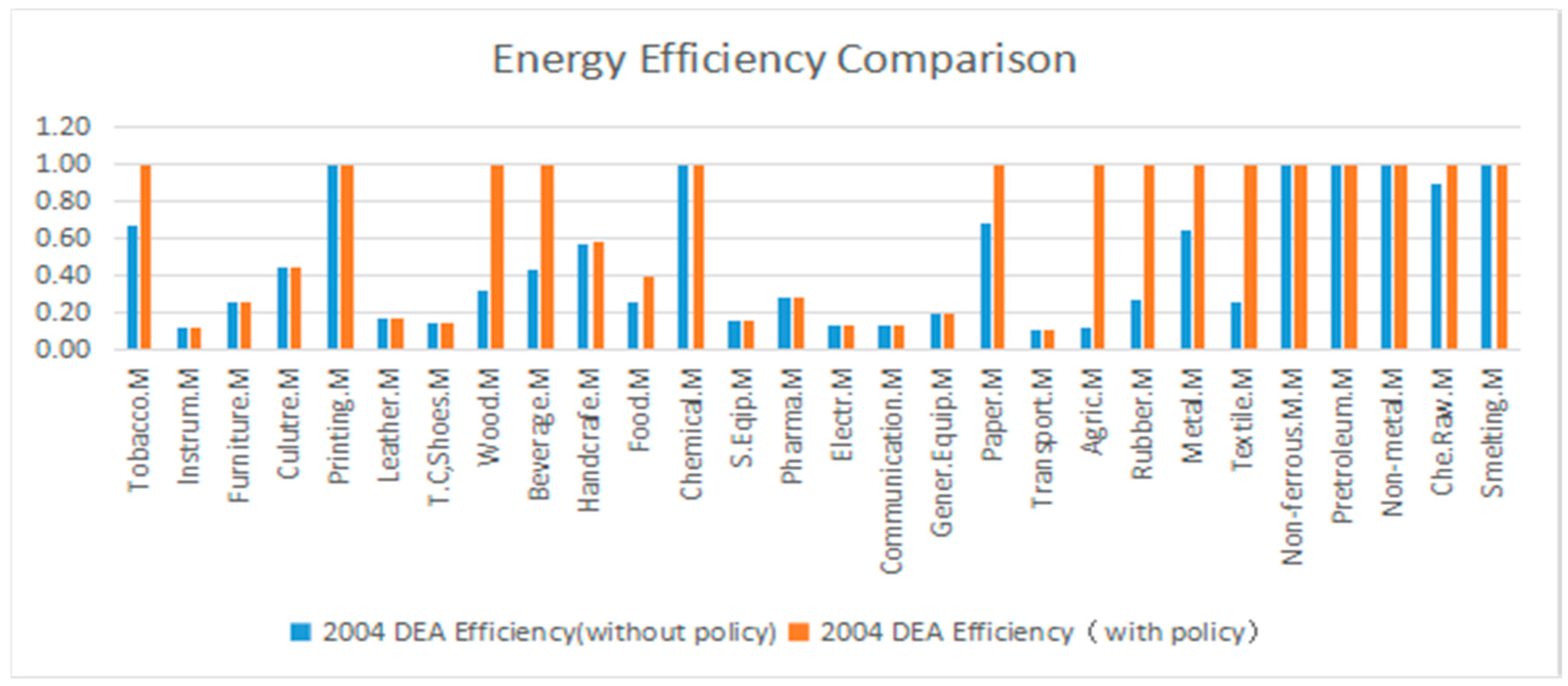
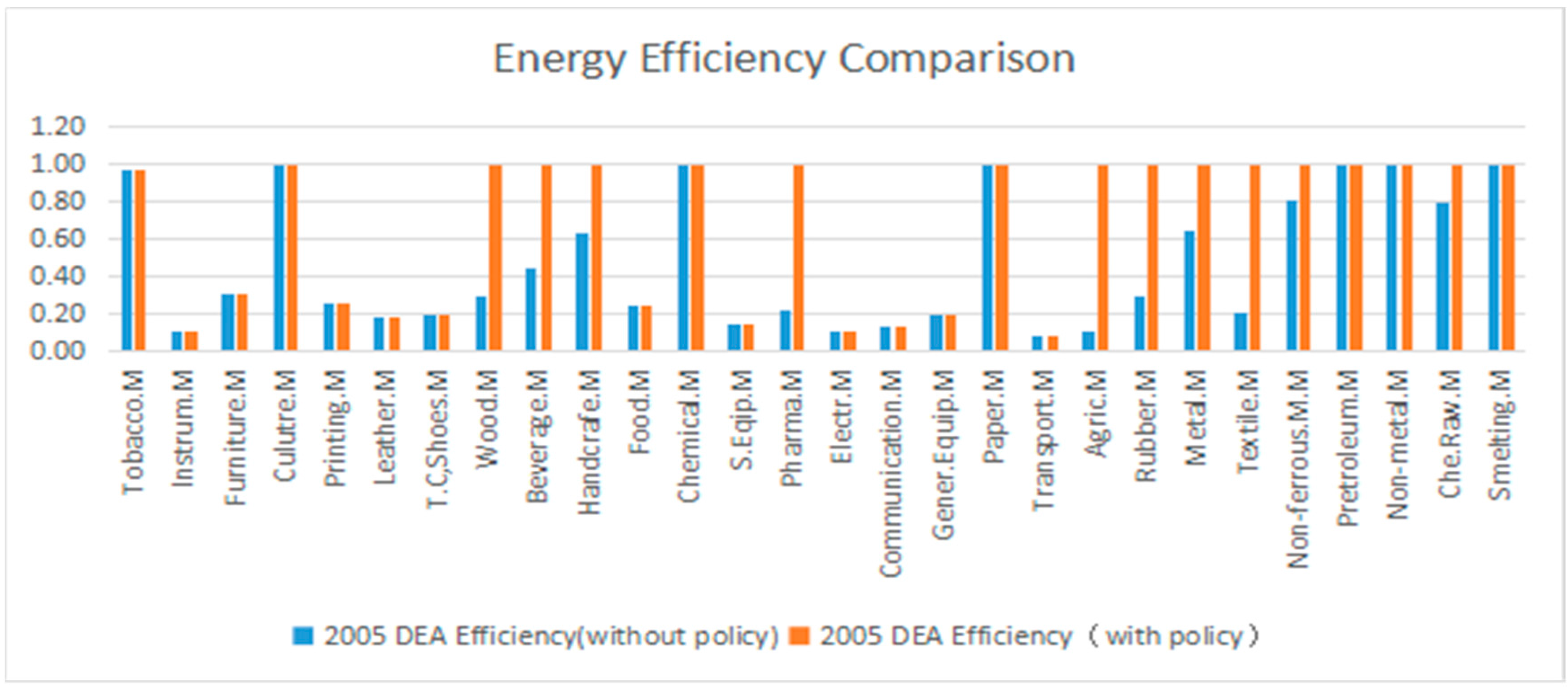


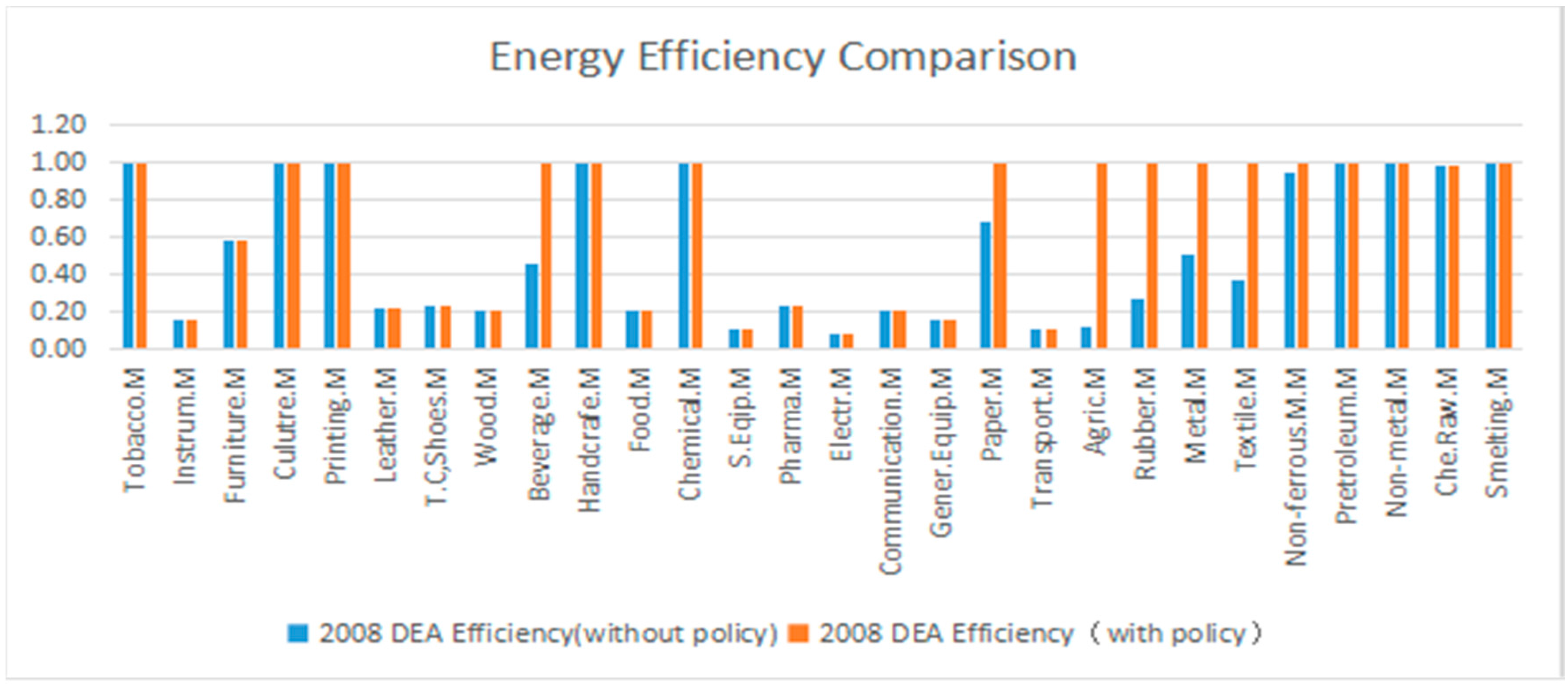

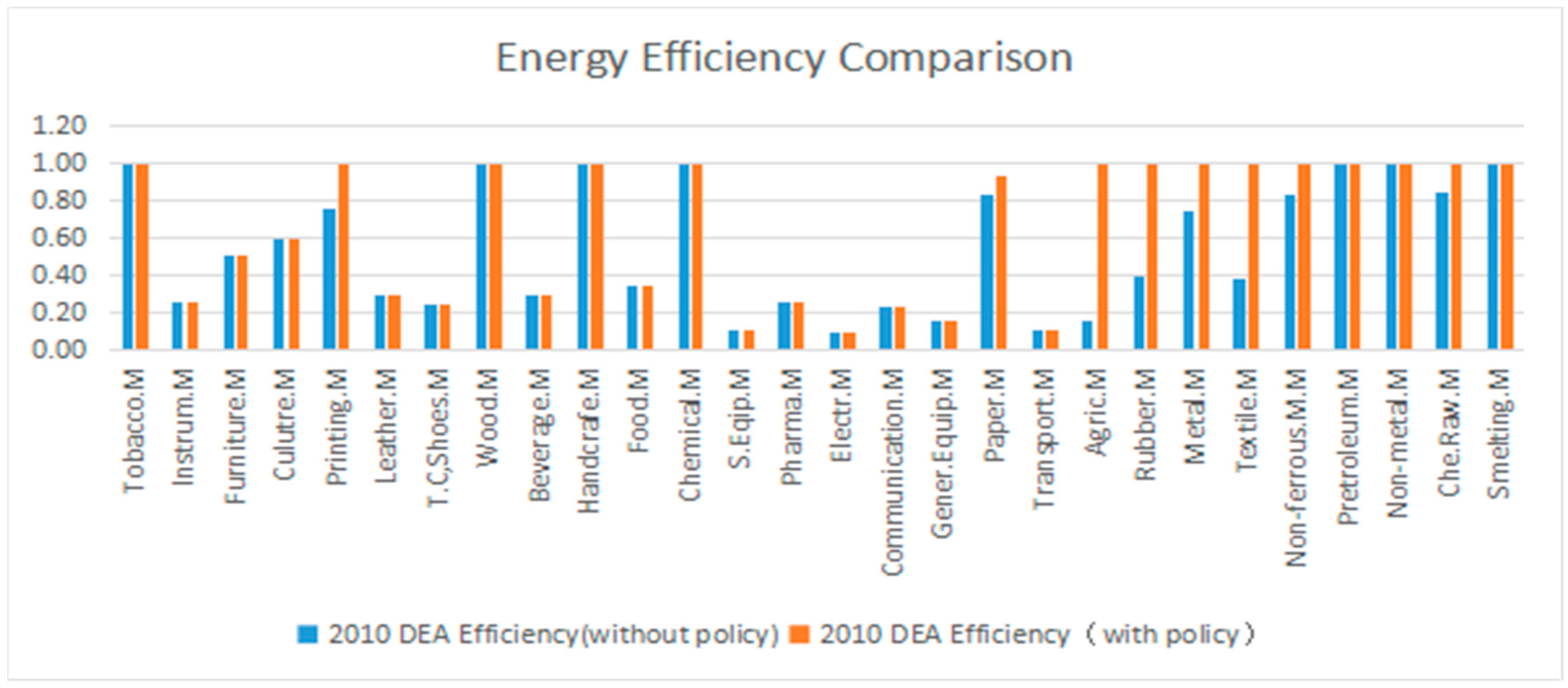
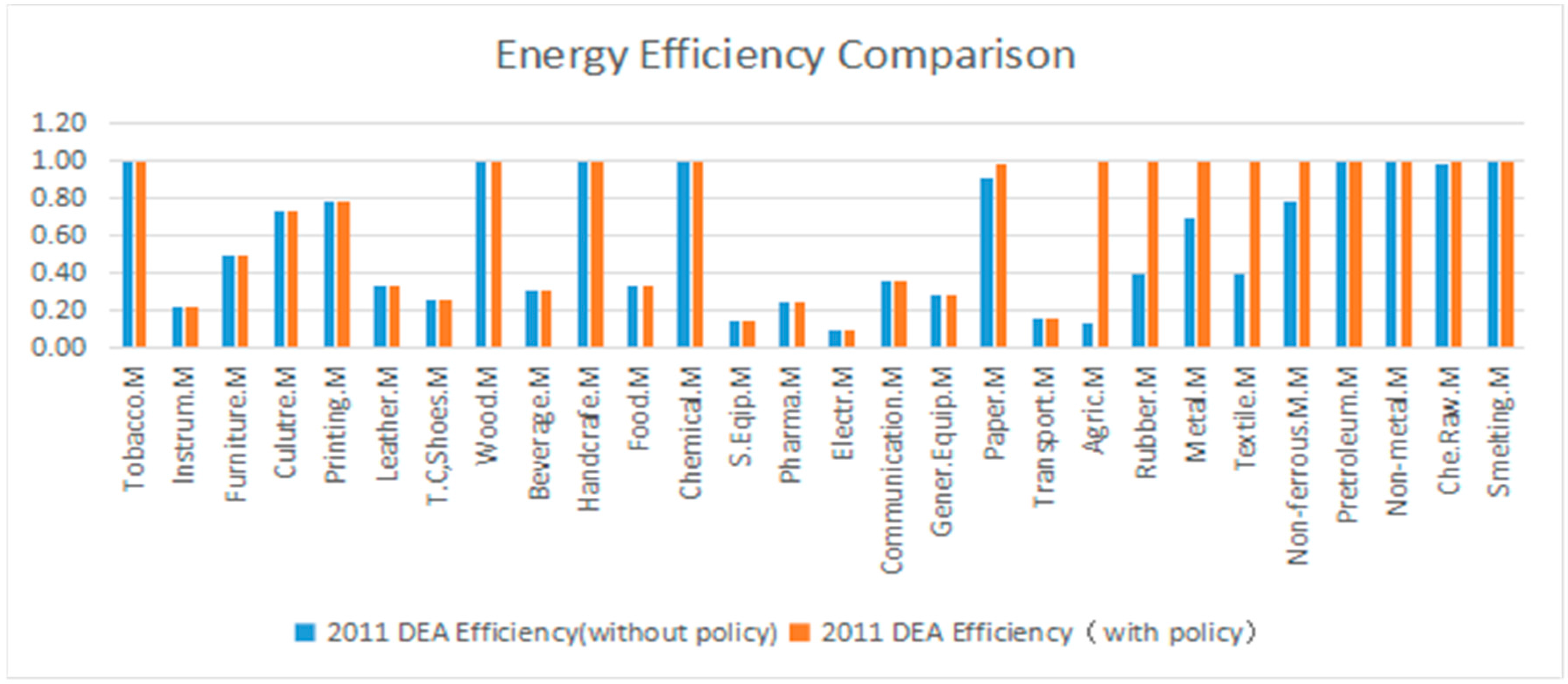
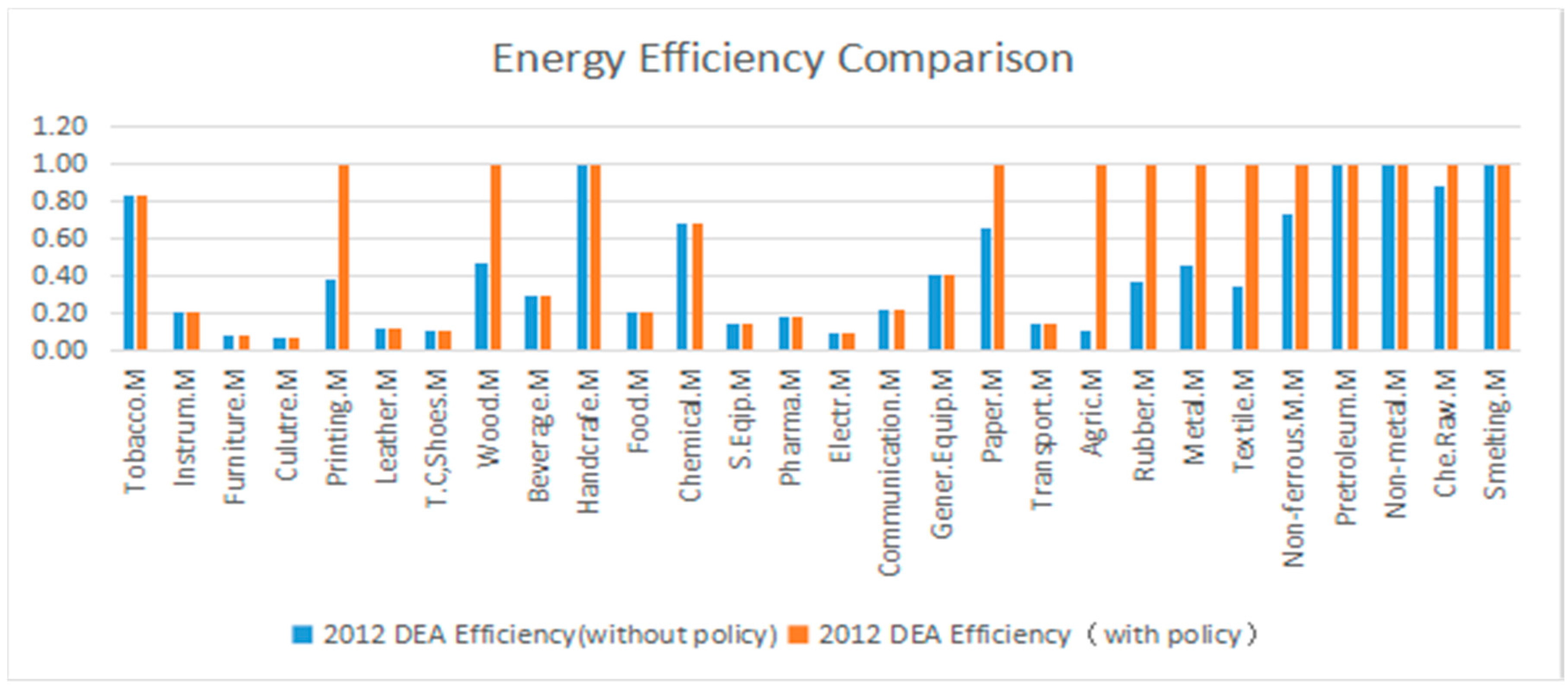
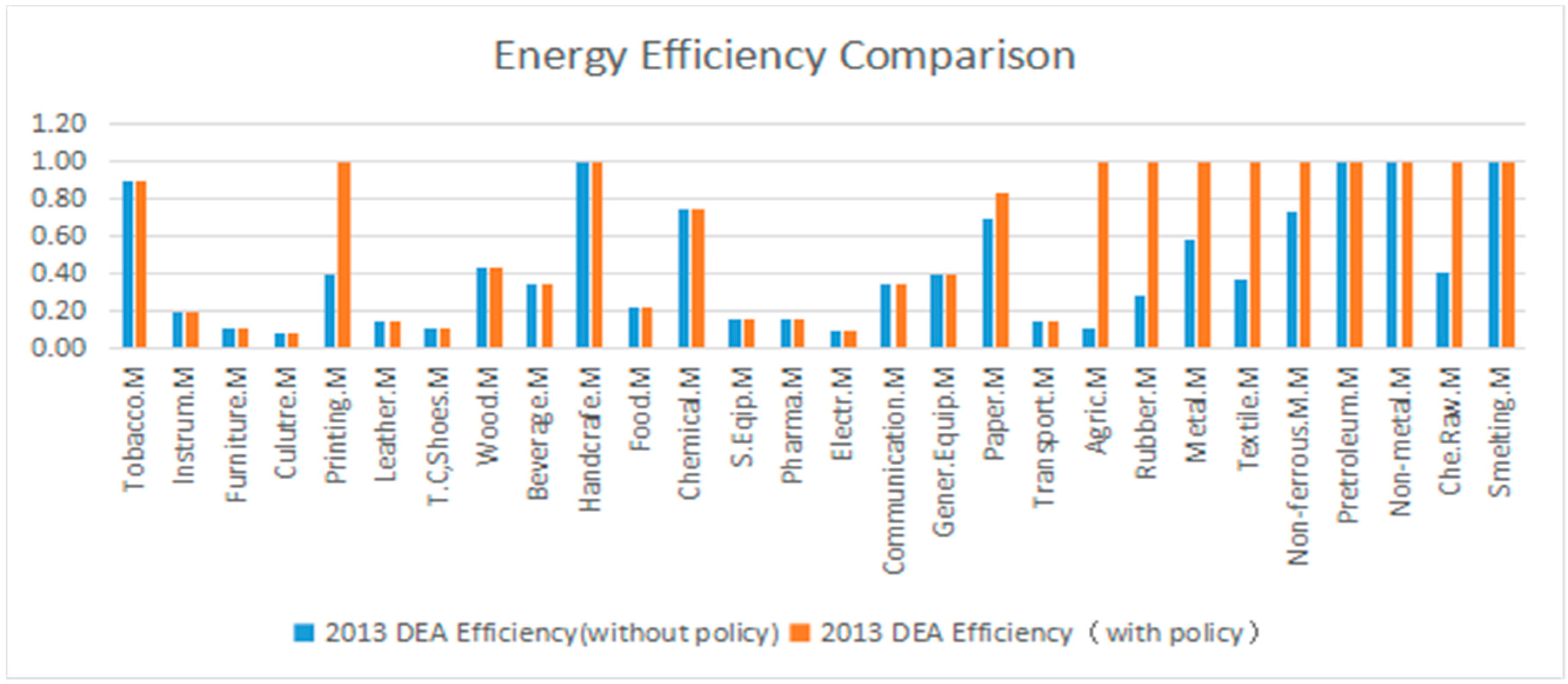
References
- Shen, L.T. Research on the Effect of Technology Progress on Energy Efficiency Based on Spatial Heterogeneity; Beijing Forestry University: Beijing, China, 2016; pp. 1–52. [Google Scholar]
- Wang, S.S.; Qu, X.E. Research on Total Factor Energy Efficiency Change of China Manufacturing Industry Considering Environmental Effects: Based on DEA-Malmquist Index Empirical Study. China Popul. Res. Environ. 2011, 21, 130–137. [Google Scholar]
- Xu, H.X. A Study on the Mechanism of Technical Transformation on manufacturing Upgrading of Our Country; Nanjing University: Nanjing, China, 2016; pp. 1–53. [Google Scholar]
- Zhou, W.Q. Heterogeneous Impacts of Energy Price, Efficiency Improvement and Technological Progress on Energy Intensity of Industrial Sectors. Quant. Tech. Econ. 2016, 33, 130–143. [Google Scholar]
- Chen, J. Chinese Industrial Sectors’ Energy Consumption Intensity and Industrial Opening-up—Based on panel threshold regression model. Sci. Econ. Soc. 2016, 143, 46–50. [Google Scholar]
- Huang, S.S.; Tan, Q.M. Study on the energy efficiency and its influence factors of manufacturing industry. Technol. Econ. Manag. Res. 2010, 6, 14–18. [Google Scholar]
- Li, J.; Wang, K.L. A study on the decomposition, regional disparity and affecting factors of China’s energy efficiency change under multi-objectives constraint. East China Econ. Manag. 2013, 27, 66–71. [Google Scholar]
- Luo, H.J.; Fan, R.G.; Luo, M. Measure and analysis on the evolutionary process of energy efficiency in China. Quant. Tech. Econ. 2015, 5, 54–71. [Google Scholar]
- Zhao, Y.M.; Zhu, F.M.; He, L.L. Definition, classification and evolution of environmental regulations. China Popul. Res. Environ. 2009, 19, 85–90. [Google Scholar]
- Hu, A.G.; Yan, Y.L.; Wang, Y.H. The development of the main objectives and targets China ‘12th Five-Year’. J. Tsinghua Univ. (Philos. Soc. Sci. Ed.) 2010, 25, 105–112. [Google Scholar]
- Zhang, R. Environmental Regulation, Energy Productivity and Economic Growth in China. Ph.D. Thesis, Chongqing University, Chongqing, China, June 2013; pp. 1–136. [Google Scholar]
- Wang, B.B.; Qi, S.Z. The Effect of Market oriented and command-and-control policy tools on Emission Reduction Innovation—An Empirical Analysis Based on China’s Industrial Patents Data. China Ind. Econ. 2016, 6, 91–108. [Google Scholar]
- Zhang, J.X.; Cai, N.; Mao, J.S.; Yang, C. Independent innovation, technology introduction and green growth of industry in China: An empirical research based on industry heterogeneity. Stud. Sci. Sci. 2015, 33, 185–271. [Google Scholar]
- Fan, M.Q. The Impact of Environmental Regulations on Total-factor Energy Efficiency. Dongbei Univ. Financ. Econ. 2016, 1, 1–39. [Google Scholar]
- Chen, D.M.; Zhang, R. The influence of environmental regulation on China’s total factor energy efficiency: An empirical study based on provincial panel data. Econ. Sci. 2012, 4, 49–65. [Google Scholar]
- Abbas, M.; Edmundas, K.Z.; Dalia, S.; Ahmad, J.; Masoumeh, K. A comprehensive review of data envelopment analysis (DEA) approach in energy efficiency. Renew. Sustain. Energy Rev. 2016, 12. [Google Scholar] [CrossRef]
- Fujii, H.; Cao, J.; Managi, S. Firm-level environmentally sensitive productivity and innovation in China. Appl. Energy 2016, 184, 915–925. [Google Scholar] [CrossRef]
- Charnes, A.; Cooper, W.W.; Rhodes, E. Measuring the efficiency of decision making units. Eur. J. Oper. Res. 1978, 2, 428–444. [Google Scholar] [CrossRef]
- Fujikura, R.; Kaneko, S.; Nakayama, H.; Sawazu, N. Coverage and reliability of Chinese statistics regarding sulfur dioxide emissions during the late 1990s. Environ. Econ. Policy Stud. 2006, 7, 415–434. [Google Scholar] [CrossRef]
- Guo, C.; Shureshjani, R.A.; Foroughi, A.A.; Zhu, J. Decomposition weights and overall efficiency in two-stage additive network DEA. Eur. J. Oper. Res. 2017, 257, 896–906. [Google Scholar] [CrossRef]
- Lim, S.; Zhu, J. A note on two-stage network DEA model: Frontier projection and duality. Eur. J. Oper. Res. 2016, 248, 342–346. [Google Scholar] [CrossRef]
- Wu, J.; Yin, P.; Sun, J.; Liang, L. Evaluating the environmental efficiency of a two-stage system with undesired outputs by a DEA approach: An interest preference perspective. Eur. J. Oper. Res. 2016, 254, 1047–1062. [Google Scholar] [CrossRef]
- Cook, W.D.; Ruiz, J.L.; Sirvent, I.; Zhu, J. Within-group common benchmarking using DEA. Eur. J. Oper. Res. 2017, 256, 901–910. [Google Scholar] [CrossRef]
- Erol, A.; Jeremy, V.C.; Marcus, W.F.; Joan, R. A theory for the evolution of other-regard integrating proximate and ultimate perspectives. Proc. Natl. Acad. Sci. USA 2009, 106, 19061–19066. [Google Scholar]
- Coelho, D.A. Association of CCR and BCC Efficiencies to Market Variables in A Retrospective Two Stage Data Envelope Analysis. In International Conference on Human Interface and the Management of Information; Springer: Berlin, Germany, 2014; pp. 151–159. [Google Scholar]
- Arrow, K. Economic Welfare and the Allocation of Resources for Invention. In The Rate and Direction of Inventive Activity: Economic and social Factors; Princeton University Press: Princeton, NJ, USA, 1962; pp. 609–626. [Google Scholar]
- Porter, M.C.; Van, D.L. Toward a new conception of the environment competitiveness relationship. J. Econ. Perspect. 1995, 9, 97–118. [Google Scholar] [CrossRef]
- Fujii, H.; Managi, S.; Kaneko, S. Decomposition analysis of air pollution abatement in China: Empirical study for ten industrial sectors from 1998 to 2009. J. Clean. Prod. 2013, 59, 22–31. [Google Scholar] [CrossRef]
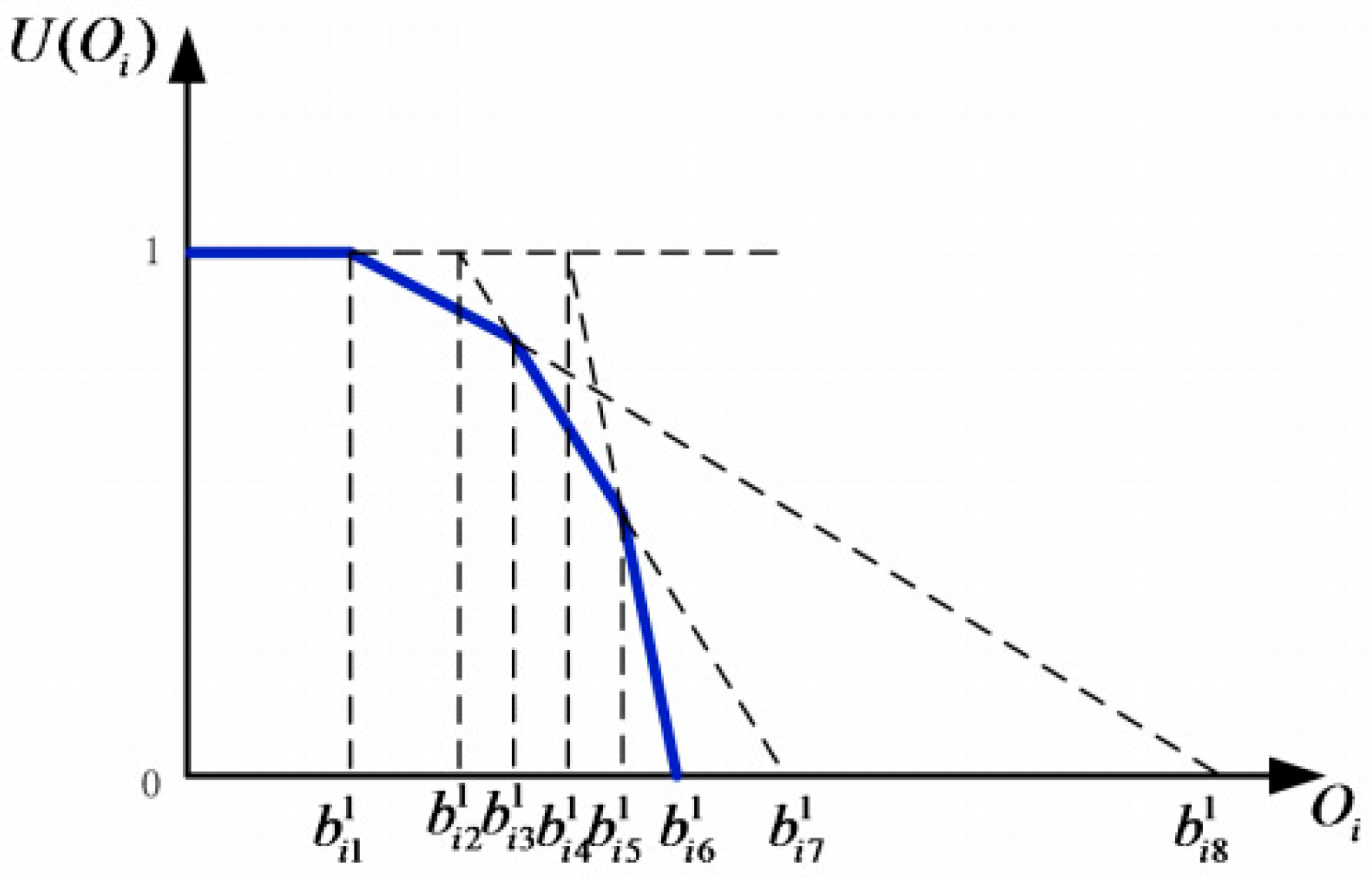

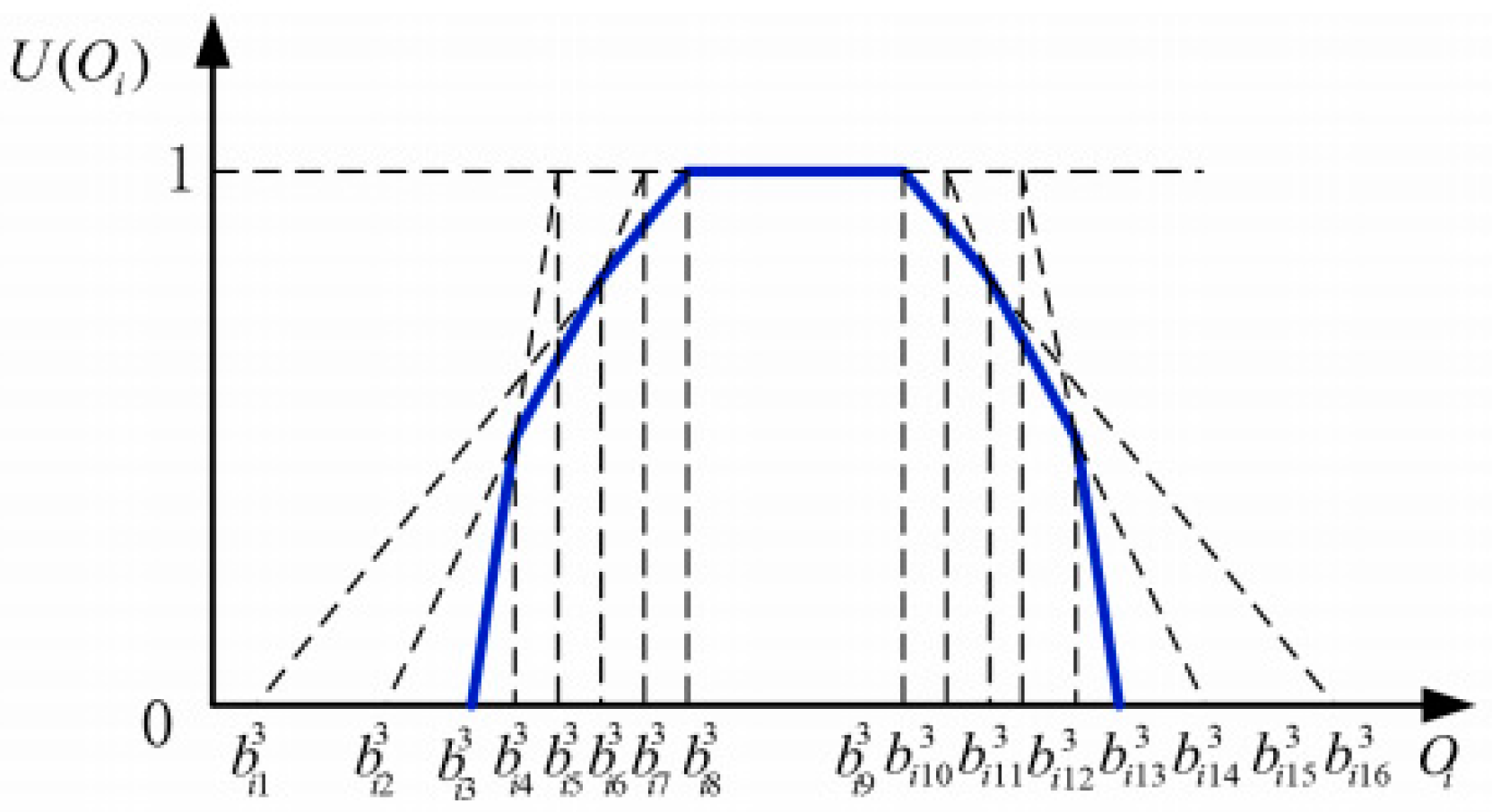

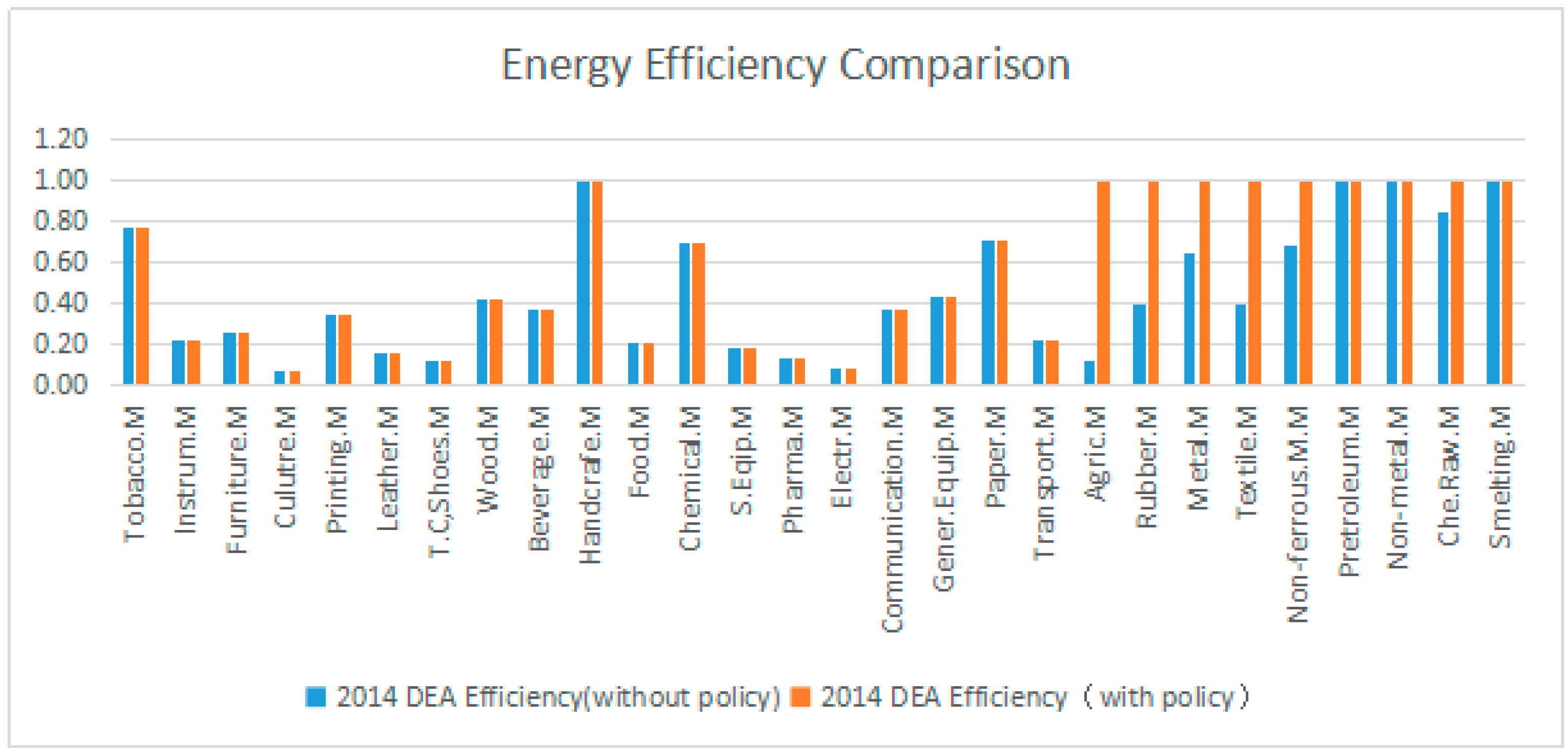
| First Indicator | Secondary Indicators | Variable Measurement Description |
|---|---|---|
| Output indicator | Energy consumption intensity | Energy consumption per unit GDP for the industries |
| Input indicators | Energy consumption structure | Ratio of industry coal consumption to total energy consumption |
| Opening up | Ratio of industry export value to prime operating revenue of each industry | |
| Environmental regulations | Comprehensive utilization rate of industrial solid waste | |
| Technological progress | R and D internal expenditure | |
| Competition within industries | Number of enterprises within the industries |
| Year | Specific Policy | Object |
|---|---|---|
| 1998 | “Regulations on the Management of Environmental Protection of Construction Projects” and industrial construction projects as clean production processes with low energy consumption and less pollutants put forward by the State Council | Industry |
| 2002 | National research, demonstration and training in cleaner production and implementation of national key projects of cleaner production technology conducted | Enterprise |
| 2004 | Comprehensive utilization of enterprises, energy-saving, improved resource utilization, pollution prevention and other clean projects increase investment compensation | Enterprise |
| 2005 | Intensity of polluting industries, level of auditing of power, chemical, paper, and other high-energy-consuming industries controlled | Enterprise |
| 2006 | Ten key energy-saving projects are implemented, such as increased industrial pollution control efforts, vigorous promotion of cleaner production, development of circular economy, and reduced pollution | Enterprise |
| 2007 | Strength of administrative management and elimination of backward production capacity of high-energy-consumption polluting industries are increased | Enterprise |
| 2008 | Goals of increasing energy conservation and environmental protection efforts, and intensity energy-saving emission reduction, should have been reached | Enterprise |
| 2011 | Industrial structure and vigorous development of the circular economy adjusted and optimized; energy-saving emission reduction technology development and application accelerated; energy-saving emission reduction economic policy improved | Enterprise |
| 2013 | Goal of energy-saving environmental protection industries becoming pillar industries of the national economy put forward | Enterprise |
| 2015 | Polluters should be responsible for their solid waste according to law; solid waste recycling system established | Enterprise |
© 2017 by the authors. Licensee MDPI, Basel, Switzerland. This article is an open access article distributed under the terms and conditions of the Creative Commons Attribution (CC BY) license ( http://creativecommons.org/licenses/by/4.0/).
Share and Cite
Chen, X.; Gong, Z. DEA Efficiency of Energy Consumption in China’s Manufacturing Sectors with Environmental Regulation Policy Constraints. Sustainability 2017, 9, 210. https://doi.org/10.3390/su9020210
Chen X, Gong Z. DEA Efficiency of Energy Consumption in China’s Manufacturing Sectors with Environmental Regulation Policy Constraints. Sustainability. 2017; 9(2):210. https://doi.org/10.3390/su9020210
Chicago/Turabian StyleChen, Xiaoqing, and Zaiwu Gong. 2017. "DEA Efficiency of Energy Consumption in China’s Manufacturing Sectors with Environmental Regulation Policy Constraints" Sustainability 9, no. 2: 210. https://doi.org/10.3390/su9020210





